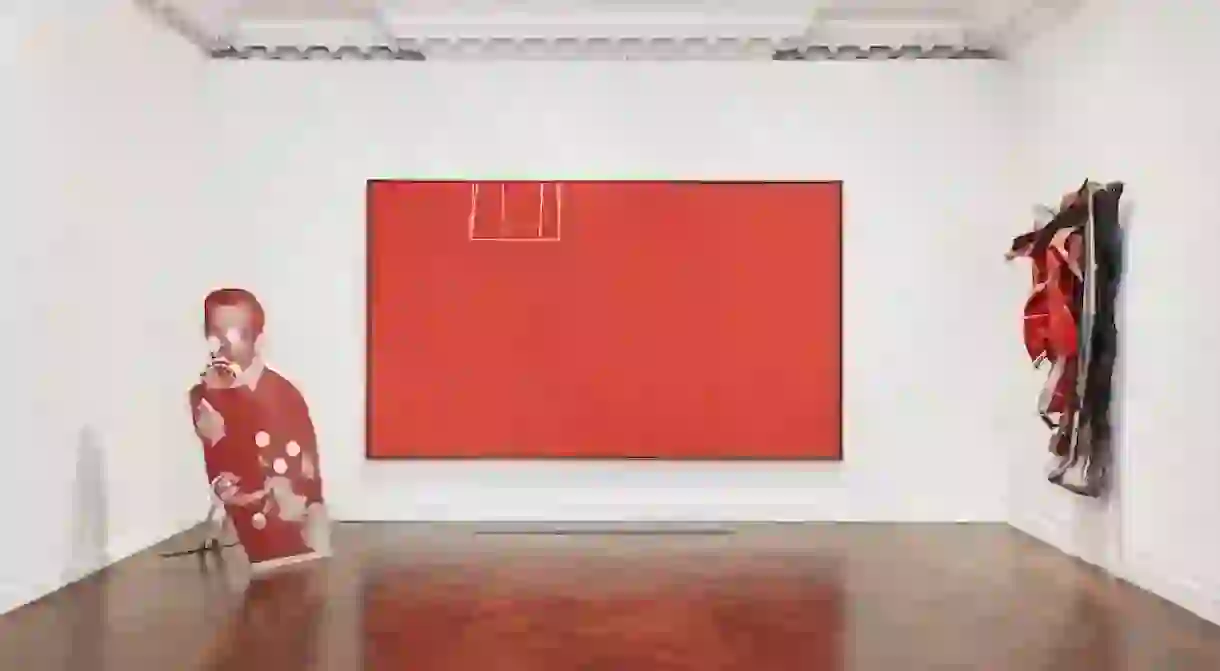A Collection of All-Red Masterpieces Command Attention in New York City

Mnuchin Gallery’s eponymous new exhibition examines the color of red as a visual, thematic, and symbolic instrument from the postwar era onward, offering a focused and commanding showcase of fiery masterpieces by some of the world’s most respected visionaries.
Perhaps the most visceral color on the spectrum, red has the capacity to evoke power and passion. And with its rich tonality, red has long been one of the artist’s most formidable tools.
From the cacophonous dissidence of Willem de Kooning’s Composition (1955) to Louise Bourgeois’s menacing Red Night (1946–1948), Mnuchin’s arresting collection of red artworks is one of the season’s most striking displays.

Rooted in the nature of red as a particularly impactful color both visually and psychologically, Reds examines 20th- and 21st-century artworks across media—including paintings, sculptures, and light installations—through the lens of its many historical, social, and cultural narratives.
Red’s value historically “stemmed from the sheer difficulty of obtaining the color itself, as only a few species of insects and plants produced it,” the show’s press release informs. According to an accompanying catalogue published by Clayton Press, “The origins of traditional—pre-synthetic—red pigments are numerous, and include mineral, plant, and insect sources… But the organic red that ruled for nearly 400 years originated with an insect.”

It takes some 70,000 cochineal bugs to yield a mere pound of red pigment, which rendered the color a rare luxury and subsequently denoted wealth and station whenever an artist used it. Furthermore, the catalogue points out that “Red is a base color so fundamental that it cannot be made from other colors… Its primary-ness is indisputable. Red takes a stand. It steals the show.”
Indeed, reds dominate Mnuchin’s Upper East Side duplex to exemplify the ways in which artists have experimented with all manners of red: via color field gradients, through abstraction, and to supplement a figurative subject matter. Yet despite Reds’s visual cohesiveness, each artwork has been carefully selected to showcase the myriad ways in which red catalyzes expression.

Jean-Michel Basquiat’s victorious painting titled The Ring (1981), for example, depicts an empowered warrior raising a spear above his head from within the confines of a boxing or wrestling ring. A primarily red backdrop relays the subject’s strength and vigor.
But for artists like Mark Rothko, who was associated with New York City’s Minimalist and Abstract Expressionist spheres during the 1940s, ’50s, and ’60s, color was used as pure language in and of itself. Rothko was known for his masterly use of color to communicate lofty human emotions through seemingly simplistic compositions. His paintings are non-verbal descriptions that convey the complexities of “tragedy, ecstasy, doom, and so on,” he said, as supremely exemplified in the contemplative serenity of his Browns and Blacks in Reds (1957).

The catalogue quotes German-born Bauhaus artist Josef Albers, who is best known for his geometric paintings of nested squares: “If one says ‘Red’ (the name of a color) and there are 50 people listening, it can be expected that there will be 50 reds in their minds. And one can be sure that all these reds will be very different.”
The aim of presenting 25 stunning red artworks is, beyond the desire to congregate masterworks by some of art history’s best-known artists, to illustrate the subjectivity of color from multiple artists’ perspectives. Ultimately, Mnuchin presents 25 interpretations of red through each individual artwork on view.
Reds will remain on view until June 9, 2018 at Mnuchin Gallery, 45 East 78th Street, New York, NY 10075.













